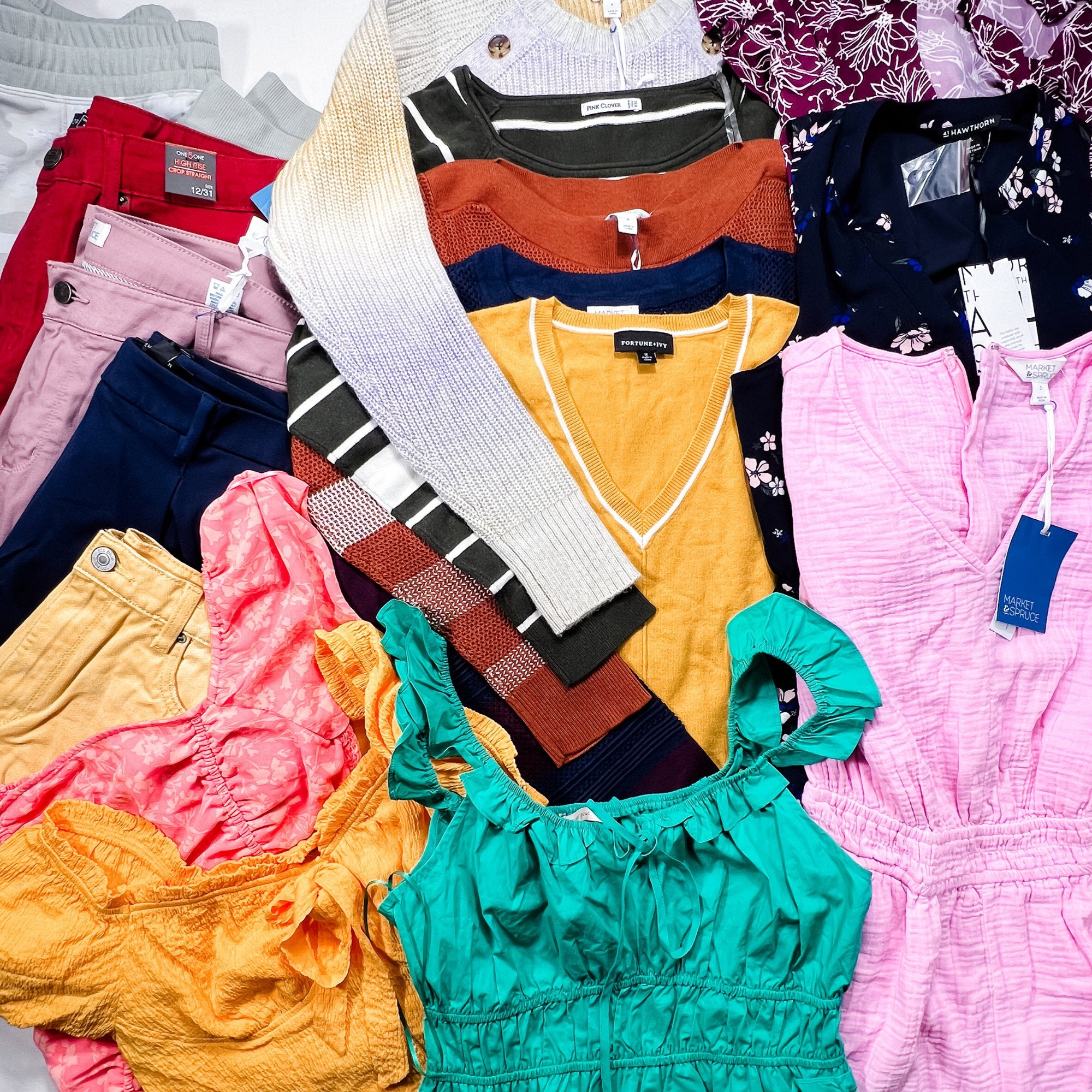Common Fabric Types Used in Branded Clothing and What They Mean
Common Fabric Types Used in Branded Clothing and What They Mean
Blog Article
Comprehending Clothing: The Value of Fabric Options in Your Wardrobe
The option of fabric in clothes plays a crucial role in both aesthetics and capability. Various materials provide varying levels of breathability, toughness, and convenience, straight influencing the wearer's experience. Recognizing these subtleties can boost one's wardrobe markedly. Yet, numerous neglect how these selections can impact not simply personal design, but likewise sustainability. What fabric decisions could redefine your wardrobe and straighten it with both design and duty?
The Role of Textile in vogue and Performance

Usual Textile Types and Their Attributes
When selecting garments, understanding the qualities of common textile kinds is important for making informed options. Cotton, a widely-used all-natural fiber, is known for its soft qualities, breathability, and convenience, making it appropriate for sportswear and day-to-day garments. Linen, another all-natural option, boasts superb moisture-wicking buildings and a distinct texture, suitable for cozy climates.Wool, often favored for its warmth and toughness, differs in excellence; merino wool is soft against the skin, while coarser types are utilized for outerwear. Artificial textiles like polyester and nylon provide longevity and resistance to wrinkles, making them preferred for activewear and travel garments. Blends, which integrate all-natural and artificial fibers, can improve performance while keeping comfort. By acknowledging these fabric attributes, individuals can choose clothing that lines up with their way of life and visual choices.
Breathability and Comfort: Selecting the Right Fabrics for Different Climates
Selecting the ideal fabrics for various climates can greatly boost comfort and overall wearability. Breathable materials are crucial in hot environments, as they permit air flow and moisture evaporation. Fabrics such as cotton, bed linen, and moisture-wicking synthetics properly attract sweat far from the body, maintaining the user cool and dry. On the other hand, in cooler climates, thicker fabrics like wool or fleece give insulation while maintaining breathability, making sure heat without overheating.Additionally, the selection of textile weight plays a vital function; light-weight fabrics are more effective for summer, whereas much heavier choices are fit for wintertime wear. Understanding the unique homes of each material allows people to clothe suitably for varying weather problems. Eventually, picking breathable and comfortable materials tailored to certain climates can considerably boost everyday convenience and improve the overall experience of using clothes.
Durability and Treatment: Just How Fabric Influences Long Life of Your Wardrobe
Choosing the best materials can considerably influence the durability and care requirements of a wardrobe. Fabrics such as cotton and polyester are known for their strength and simplicity of upkeep, making them perfect for everyday wear. On the other hand, fragile products like silk and shoelace need even more careful handling and specialized cleansing methods, which can raise the moment and effort required for care. Branded Clothing.Durability is additionally affected by the material's weave and finish; securely woven fabrics have a tendency to stand up to damage better than freely woven options. In addition, synthetic blends usually provide improved toughness, integrating the most effective top qualities of multiple fibers.Understanding the treatment directions for every fabric is necessary, as incorrect drying out or washing can lead to early wear. Eventually, choosing long lasting products can bring about a longer-lasting wardrobe, lowering the regularity of replacements and adding to an extra lasting fashion option
The Effect of Fabric on Fit and Shape

Sustainable Textile Options: Making Eco-Friendly Decisions
The influence of material extends beyond fit and shape to encompass ecological aspects, prompting a growing rate of interest in lasting fabric options. Green materials, such as organic cotton, hemp, and Tencel, are getting grip among customers who focus on sustainability in their closets. These products are commonly generated with less chemicals and water, reducing their environmental footprint.Additionally, recycled textiles, made from post-consumer waste, use an innovative remedy to the fabric sector's contamination trouble. Brands significantly welcome transparency in their sourcing approaches, permitting customers to make informed decisions about their purchases.Choosing sustainable materials not only supports moral techniques however additionally motivates the style industry to adopt more responsible production approaches. As awareness of environmental problems rises, individuals are urged to review the lasting influence of helpful hints their fabric options, fostering an activity in the direction of a more environmentally mindful and lasting technique to fashion.
Elevating Style: Exactly How Fabric Can Change an Attire
While numerous may focus on color and cut when choosing an attire, the selection of material plays an important function in elevating style and improving overall look. Different materials share right here distinct moods and messages; for instance, silk exudes deluxe and sophistication, while denim uses an informal, loosened up ambiance. The texture and drape of a material can dramatically change the silhouette, with structured materials offering a refined appearance and softer ones creating a much more fluid, relaxed aesthetic.Moreover, the weight of the textile affects wearability across periods. Light-weight textiles like bed linen and cotton are ideal for summer, while larger products such as woollen and velour offer warmth and beauty in cooler months. Comprehending textile properties, such as breathability and stretch, likewise equips people to make enlightened selections that boost comfort without jeopardizing style. Eventually, the ideal material can transform a clothing from ordinary to remarkable, making it an important consideration in any type of closet.
Often Asked Concerns
Exactly how Do I Recognize the Textile Web Content of My Clothes?
To identify textile material, one can examine treatment tags, conduct shed examinations for fiber recognition, or consult material examples. These techniques help set apart products, making certain notified options for garments care and maintenance in daily wear.
Can Fabric Selection Affect My State Of Mind or Self-confidence?
Material option can considerably impact an individual's visit homepage state of mind and confidence. Branded Clothing. Certain materials may stimulate feelings of convenience or elegance, while others can really feel restrictive or unflattering, inevitably influencing self-perception and emotional health throughout the day
What Fabrics Are Finest for Delicate Skin?
For people with delicate skin, natural materials like bamboo, cotton, and bed linen are frequently suggested. These materials are breathable, hypoallergenic, and less likely to create inflammation, making them appropriate options for comfort and skin health and wellness.
How Do I Effectively Laundry and Care for Various Fabrics?
To effectively wash and care for different fabrics, one must think about each product's specific requirements, including temperature settings, cleaning agents, and drying techniques, ensuring longevity and keeping the fabric's original top qualities for optimal usage.
Are There Specific Fabrics for Athletic or Performance Wear?
Athletic or performance wear often utilizes materials such as spandex, polyester, and nylon. These products are developed for moisture-wicking, breathability, and flexibility, enhancing motion and comfort during exercises while giving toughness and assistance. Alternatively, in cooler climates, thicker fabrics like wool or fleece offer insulation while preserving breathability, making certain warmth without overheating.Additionally, the selection of fabric weight plays an important duty; lightweight materials are more suitable for summertime, whereas heavier alternatives are suited for winter season wear. In comparison, fragile materials like silk and shoelace require more careful handling and specialized cleansing approaches, which can increase the time and effort needed for care.Durability is also affected by the textile's weave and coating; firmly woven fabrics often tend to withstand wear and tear much better than loosely woven alternatives. In comparison, stiff materials can limit activity however supply a timeless, sleek look.Moreover, the thickness and texture of the material can affect the aesthetic understanding of body shape. The effect of material prolongs beyond fit and shape to include environmental factors, prompting an expanding rate of interest in lasting textile options. The appearance and drape of a fabric can drastically modify the shape, with organized fabrics supplying a polished appearance and softer ones developing an extra fluid, kicked back aesthetic.Moreover, the weight of the textile influences wearability across periods.
Report this page